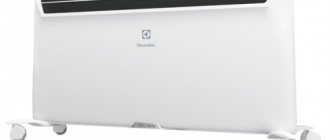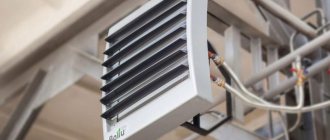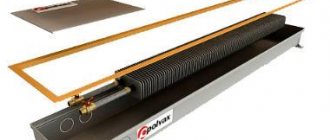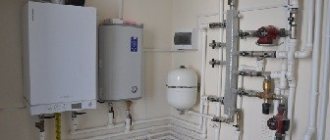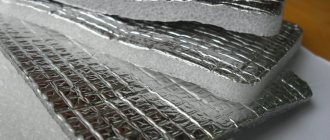Fan heaters are designed for local heating of residential and work premises, offices. They are not suitable for continuous work, therefore they are used only where people stay for a relatively short time.
A household heater for an apartment or a country house is usually a fairly simple device. Of course, sometimes you can find high-tech heaters with remote control from a smartphone, but in most cases nothing complicated can be found in such devices.
Accordingly, it will not be too difficult to choose a suitable heater. The main thing is to decide on the main parameters. First of all, this is the type of heater and its power, and secondly, additional features and options.
Principle of operation
The main components of a fan heater are a heating element and a fan. In the role of the first, a metal alloy in the form of a spiral, ceramic plates or heating elements is used.
Individual models of fan heaters contain several heating elements of the same type.
The main percentage of heat fans is powered by the electrical network.
When the device is connected to it and the operating mode is turned on, the heating element begins to gain temperature, generate heat and heat the air nearby, and the fan pushes the already heated air out.
Warm air is gradually distributed throughout the room.
Which is better - a heat curtain or a fan heater?
Fan heaters work with a spiral heating element and are only suitable for small spaces. They cannot be used for full heating of a warehouse, workshop or store, but in one office they will be useful. Of course, there are industrial models with a thermal power of up to 65 kW, but they will not help maintain a comfortable temperature in the case of constant contact with the outside air.
If we are talking about the entrance, entrance area, where doors / gates are constantly swinging open, letting in visitors or equipment, then it is advisable to use only a thermal curtain. They are especially effective for well ventilated areas.
Types of fan heaters
Classification by type of heating element:
- A spiral made of an alloy of metals, most often it is nichrome. Fans with such a heating element are the cheapest.
- Ceramic plates. They are considered the safest.
- TEN (tubular electric heater) - a heating element is built into a metal pipe. A substance with high heat conductivity is also put there. The metal spiral heats up more than the ceramic plate, so a device with such a heating element heats up the room more. But at the same time, combustion products (dust particles) are released into the air.
Ceramic plates do not have this effect, which is why they are considered the most harmless. TEN heaters are used to heat spacious rooms, as their performance is very high.
What is the difference between a heat gun and a fan heater
When heating a room, two electric heaters, equivalent in design parameters, are used. One is called an electric heat gun, and the other is a fan heater. In both cases, a heating element and fan arrangement is used. And then the differences begin.
- An electric heat gun is used mainly for heating utility, warehouse and industrial premises, therefore, the casing of such devices is metal and has a metal base for installation.During the operation of such heating devices, mechanical stress is quite possible and all internal parts are securely fixed in the case, and have reinforced fasteners and insulation.
- Thermal electric guns as a heating element carry a heating element of a tubular or ribbed structure, a variant of a cermet element is possible. Such heating devices are not afraid of shaking and careless transport movements, in contrast to the nichrome spiral used in thermal fans. Nichrome thread is quite thin and can break if handled roughly.
- The power of electric heat guns can range from 1.5 kW to 15 kW, which makes it possible to use them for heating rooms with different areas and rates of air exchange. In this case, the installation of a thermostat is mandatory, with which you can set the operating mode that allows you to maintain a comfortable temperature and save energy.
- The duration of the cycle of operation of an electric heat gun, subject to safety precautions, is unlimited, unlike a fan heater in a plastic case, which is not advised to use in long-term operating modes.
In total, from the above, the thermal electric gun is more resistant to mechanical stress, has a wider range of applications and power. Thermal electric fans are used in everyday life for short-term work and do not "like" careless handling. They have a power in the range of 1.5-2 kW and are of limited use. SELECTION OF ELECTRIC HEAT GUN
If, among the entire selection of electric heaters (oil radiator, electric convector), the decision to buy has stopped at an electric heat gun, you need to decide on the power and type of the heating element.
In terms of power, the easiest way is to take the area of the room that needs to be heated and divide by 10. For example, with an area of 25 m2, a power of 2.5 kW is required. But it is better to take with a margin of 20-30%, as an example for ideal conditions (as with the minimum fuel consumption in the car according to the instructions).
The choice of a heating element is small - heating element or sintered element. With a higher cost of ceramics, it makes sense to choose a heating element. In terms of technical and other characteristics, fire safety, they are the same, so why pay more?
If you are done with the choice, it's time to buy an electric heat gun in Yekaterinburg. The best price for electric heat guns in our online store. Compare!
Additional functions
The safety of thermal equipment is ensured not only by correct operation, but also by some built-in functions and elements:
- The regulator helps to switch between heating elements of higher or lower power, if there are several of them in the heater.
- Expensive models of thermal equipment have timer or delayed start functions.
- The splash-proof feature is useful if the fan is to be used in a kitchen or bathroom.
- The thermostat function cools the appliance when it gets too hot.
- A special relay will automatically turn off the fan heater if it falls.
Evgeny Filimonov
Ask a Question
Fan casing is usually made of plastic, so horizontal operation can lead to melting of the casing at best and fire at worst.
Complete set and accessories
The complete set of fan heaters differs according to the type of installation:
- Floor-standing fan heaters are made static or mobile. The first ones are equipped with strong legs, the second ones - with legs or wheels.
- Wall-mounted appliances are most often installed in small spaces.They are only stationary and are attached to the wall, often a remote control is included in the kit.
- Wall or ceiling heat fans are fixed to the wall or ceiling surface using a special bracket or mounting bracket.
Some accessories for heating fans:
- Fan speed control device helps to avoid overload and breakage.
- To increase the distance that a stream of warm air overcomes, a special confuser is sold in stores.
- Controllers that give commands and switch functions are built into the instrument during assembly or sold separately.
- For large models, special trolleys are sold, which makes the stationary floor heater mobile.
- Thermostats, like controllers, are sold separately.
- The mounting console turns the device body in any direction.
Evgeny Filimonov
Ask a Question
Typically, heating equipment is powered by electricity. However, water-powered air ventilation devices are produced. Hot water gives off heat to the heater, and due to this, it works.
Advantages of a fan heater
- A spacious room is quickly warmed up. The heating rate increases depending on the power of the device. The speed leaders are heat guns.
- Safe when used correctly. In modern devices, the necessary devices are installed that will not allow the fan heater to melt or catch fire.
- The most fireproof and environmentally friendly equipment is considered to be with a ceramic heating element.
- A wide choice of designs will allow you to choose a fan heater that would suit the interior of the room.
- Mobile models are transferred from room to room.
Fan heaters
Such devices are powered by electricity. In general, they consist of two basic elements, namely, one that heats the air and blows it around the room (fan).
The main advantage of an electric fan heater is the instant start of operation. After a very limited time after connecting it to electricity, such a heater already "gives out" the air of the required temperature. Another very remarkable fact is that these heaters are modest in size and light in weight. This means that such fan heaters are easy to move from place to place. It is also important that their price is low. If it is necessary to heat the air in a small room, then a fan heater is best suited here.

Varieties:
- tabletop. These are small, low-power products. Suitable for heating a small space;
- floor. These large items are often made in the form of a pillar or column. For movement, such fan heaters can be equipped with a special element. Able to heat rooms with a large area;
- wall. These models are the most expensive. They can be controlled remotely.
If you need to quickly heat the room (but not its walls), then the best choice is fan heaters.
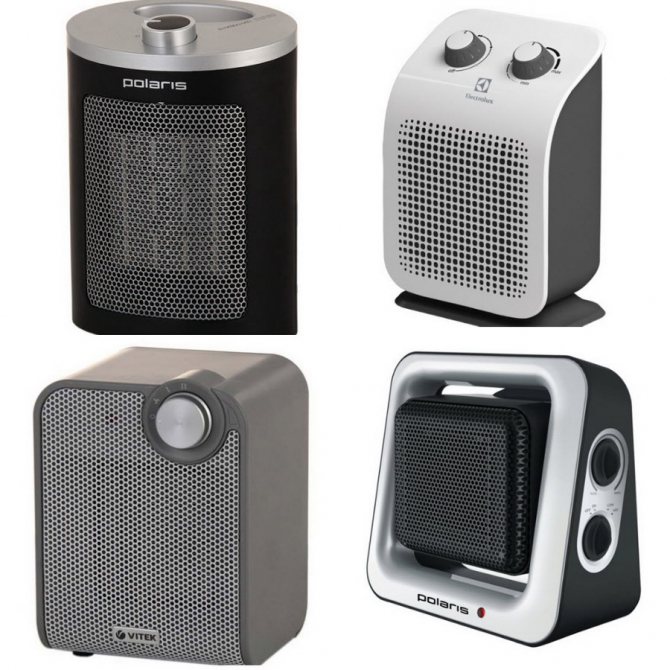

disadvantages
- They make a lot of noise during operation, but in stationary models there are sometimes silent fans.
- When dust particles enter the housing, they become combustion products, which gives off an unpleasant odor. This is typical for models with a spiral heating element.
- The operation of the devices leads to overdrying of the air. Considering that heaters are used mainly in winter, when the air itself is dry, this disadvantage is greatly exacerbated.
- The least dry air is provoked by fans with a ceramic type of heating element.
- Dust lying on the surface of objects rises under the influence of air jets.
Heating elements of electric boilers
All electric boilers can be separated according to the type of heating element.Each of them has its own operating principle and features. And so, such boilers can contain:
TENA is a well-known and common way of heating water. The tubular heating element heats up the water, which moves and provides uninterrupted heat supply.
However, it has certain disadvantages. TENA often suffers from limescale from heating water and high temperatures. Because of this, it fails. This is solved by replacing the heating element. But it can still create discomfort during the heating season.
How to choose a fan heater
- The main percentage of heat fans is made of plastic. The main requirement for the body is strength. This ensures both durability and safety of use.
- The required power is calculated according to the area of the largest room in which the fan heater is supposed to be installed. It is derived from the calculation of 1000 watts / 10 sq. m.
- You need to choose a mobile or stationary device based on your needs. If heating equipment is required in several rooms, a portable fan will be needed. Stationary models are more powerful and generate less noise.
- The noise level also depends on the design of the fan. The "quiet" type is tangential. The axial type of the fan does not have such an advantage.
- Don't forget about safety. Fall-off, over-temperature cooling, safety heating element - these options will keep users safe from fire.
- Fan heaters use two types of ceramics: glass and metal. Of these, preference should be given to glass.
- The maximum number of operating modes in modern fans is 3. This number of modes makes the operation of the fan-heater comfortable and economical for users.
We choose what is better heat gun or fan heater, heater or convector
In order to choose the right equipment, you need to determine exactly for yourself whether a fan heater or a convector is better, and based on the conclusions made, make a purchase. Each type of equipment has its own positive and negative sides, and it is also necessary to take into account the conditions in which the operation of the selected units is supposed to be taken into account. You have to choose between:
- Fan heaters,
- Infrared heaters,
- Oil radiators,
- Heat guns
- Convectors.
And the accuracy of the choice will depend not only on the temperature regime in the room, but also on the safety of the equipment.
Exploitation
In order for the device to serve as long as possible, follow some operating rules.
- Periodically wipe dust off the surface of the thermal fan case.
- Clean the air intake grilles with a vacuum cleaner.
- A regular inspection will help prevent malfunctions.
Pay particular attention to the operating rules related to fire safety:
- Unplug the fan before cleaning and wait for it to cool down.
- The fan heater must not be connected to an electrical network without grounding.
- Do not use the fan heater in rooms with air humidity exceeding 93%, in a chemically and explosive environment.
- Do not drop the fan heater or handle it by the power cord.
- Check the integrity of the wire before each connection.
- It is not safe to use the fan heater in close proximity to water, even if it has a splash guard installed.
- Do not place the fan on carpet.
- Never cover the fan with fabrics or obstruct the movement of air currents, as this may result in a fire.
- If the fan is not ceiling mounted, it is also unsafe to operate it horizontally: the plastic case melts or catches fire.
- There should be at least half a meter between the fan heater and the nearest objects.
- The appearance of sparks and too frequent activation of the temperature controller indicate a malfunction. The fan heater cannot be used in this state.
Warranty
- The standard warranty period for the operation of the fan heater is 12 months from the date it was sold. From the date of production, it is no more than 24 months.
- In some cases, an extended product warranty is provided, which is 60 months from the date of manufacture. You can check the extended warranty at the service center, in the store or on the manufacturer's website.
- Upon purchase, a warranty booklet with tear-off coupons is provided. If the instruction manual does not contain a mark of a trading company, the warranty period starts from the date of production.
- The owner reserves the right to free repairs in the service while the warranty period is valid. The workshop will withdraw the tear-off coupon after each repair. Accounting is kept in the guarantee book.
- In case of violation of the rules of operation, the heating unit is automatically removed from the warranty. From this time on, the repair work is carried out at the expense of the buyer.
- The exchange of goods under warranty takes place in accordance with the rules that apply at each outlet.
The buyer loses his warranty rights if:
- the product certificate and warranty card are filled in incorrectly;
- passport or warranty card is missing;
- the product was used for other purposes or in violation of the rules of operation;
- the product was damaged mechanically, chips, cracks or deformation of the case were found on it;
- traces of self-repair or any other implementation were found;
- the design of the fan heater has been changed;
- foreign substances (sand, clay, dust and soot) were found inside the device;
- the serial number is completely or partially erased;
- the fan heater has been exposed to high humidity, due to which rust has formed, or aggressive chemicals;
- the problem is associated with an incorrect connection to the mains and with all external sources of electricity;
- a malfunction has occurred in an electrical source that is not grounded.
The warranty does not apply to cases related to natural disasters and accidents, and to products that come with the equipment, as they work for a short time.
The warranty conditions do not imply cleaning of the fan heater and the departure of repair services to your home.
Malfunctions
- The most common problem is a faulty fan heater motor.
- Troubles associated with the ingress of a foreign body (wire, rope, thread) on the motor shaft are not excluded, as a result of which excessive heating of the winding occurs. In this case, the entire electric motor of the fan heater is replaced.
- Another reason for a breakdown is the shutdown of the overheating protection function, due to which the thermostat does not react when the temperature threshold is exceeded. As a result, the heating element and the wiring of the fan heater burn out.
- Sometimes the cause of a breakdown is an increase in the voltage in the mains. For preventive purposes, you should regularly take the fan heater for technical inspection.
- Often, overheating of a fan heater occurs due to clogging of the air outlet and inlet with foreign objects.
- Devices rarely break down due to worn switches, thermostats and fuses. Sometimes the heating element breaks down, but this is a difficult case, and then the device must be repaired in the workshop.
Before starting your self-repair, determine the validity of the fan warranty, since the device that was opened is automatically removed from it.
The second rule is to never carry out self-repair if you are not sure of its high-quality completion.
The first step is to disassemble the device case.To do this, unscrew the bolts that connect the two body parts. Use a flat head or Phillips screwdriver. When both parts of the case have been removed, inspect the contents of the fan and look for burnt-out parts.
If any, replace them with new ones. Make sure that this does not happen again. If the examination did not give positive results, then the problem is more complicated.
It can be detected using several methods:
- The first method is based on finding a broken contact in the connecting wire. Sometimes replacing the entire cord helps to solve the problem, and sometimes a partial replacement is carried out with the correct connection and insulation of the wire.
- The second method involves replacing the fan heater fuse. There are two types of fuses, they are located next to each other.
- One serves for thermal protection, the other for temperature protection. Use a tester to check the functionality. If no current passes through them, a replacement is made.
- The third method is related to the malfunction of the heating coils, when the fan is running but there is no heating. In this case, you need to determine the location of the break of the contacts and connect them.
- The fourth method requires replacing the heating mode switching unit. In most cases, these parts are made in China and sometimes fail due to poor quality.
- The fifth method is to correct the most difficult breakdown: the combustion of the electric motor of the device. The likelihood of buying a new fan heater in this case borders on the cost of repair, because more often the replacement of the electric motor is required completely.
Evgeny Filimonov
Ask a Question
In the event of a breakdown of the device, spare parts are purchased for replacement, if they cannot be repaired. The average price of large parts, such as a spiral and an electric motor, varies from 600 to 1000 rubles.
Small parts like a switch and a cord will cost from 50 to 120 rubles.
Fan heater manufacturers
- Ballu - a company that produces air conditioners, fans, heaters: oil, infrared, and other heating equipment. Headquartered in China, it provides standard warranties for fan heaters, and heat guns are warranted for up to 3 years.
- Bork Is one of the most successful Russian equipment manufacturing companies. Its main specialization is small household and kitchen appliances: food processors, electric dryers, microwave ovens, etc. Bork products are ranked among the elite quality class.
- De'Longhi Is an Italian company, one of the world's largest suppliers of household appliances. Produces products of average (but not budget) quality class. The factories are located in three countries, including Russia.
- Electrolux Is a large Swedish company that manufactures household appliances. High and budget class products.
- Polaris Is an international company that produces household appliances in all areas: from gas lighters to radiators and fan heaters.
- Scarlett - a manufacturer that is very popular in Russia and the CIS. The company provides both basic and high-tech products with wide application.
- Supra - the manufacturer has established itself in the production of TVs, air conditioners and fan heaters. Also known for a large selection of vehicles for cars.
Efficiency and performance
For each heater, the manufacturer indicates the comfortable and maximum area of the room for which this or that device is intended. Thanks to these parameters, it is easiest to understand what kind of device you need. In most cases, the dependence here will turn out to be strictly linear: if the power of the heater is twice as high, then it will give back approximately twice as much heat per unit of time.
The type of heater in this case does not matter: if two heaters have spent the same amount of energy, then they heated the room in the same way (but not necessarily at the same time!).
Control and indication
Simple heaters have a mechanical control system that looks like a set of temperature control knobs and on / off buttons. Such heaters can operate at full or partial load and turn off on their own when a certain temperature is reached, but they are usually not capable of more.
It should also be noted that the temperature control will be rather rough, and, as a rule, not in degrees, but in the form of a rotating knob with the values of "minimum", "maximum" and several intermediate unnamed gradations. Thus, you will have a rather long procedure for selecting the optimal position of this knob in accordance with your own feelings of the temperature in the room.
Modern models are increasingly equipped with an electronic control system, including a set of mechanical or touch buttons and a digital display. The possibilities of such heaters are much wider: they can turn on and off on a schedule, maintain the set temperature (in degrees) in the room, display the temperature and current time on the display, and much more. These heaters often come with a remote control.
Finally, the most "advanced" heaters have the ability to be remotely controlled. Such devices have a built-in Wi-Fi or Bluetooth transmitter, which makes it possible to control the device from a smartphone using a special application.
Convector
This heater heats the air in the room as follows:
- Cold masses go inward through the grate located at the bottom of the product.
- Having passed through the heater element, the air warms up and comes out through the grill on the top panel. Then the flow is smoothly distributed in space.
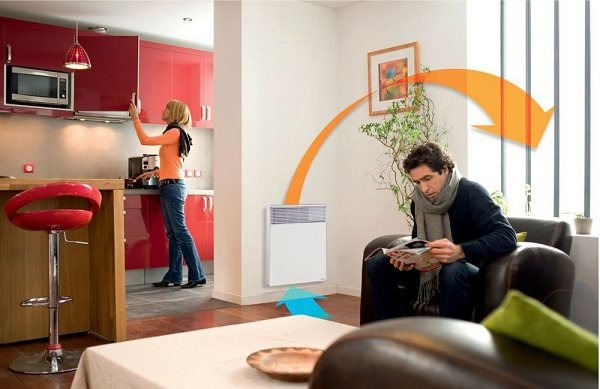

Many of the device models have a moisture protection class (marked as IP24), which allows them to be used in bathrooms and saunas.
Convector types are classified as follows:
- gas;
- electrical;
- water;
- infrared.
Among the advantages of technology, users note the following points:
- fast heating of air in the room;
- fire safety;
- different mounting options;
- built-in thermostats (you can set the required temperature level);
- the ability to create a network of several devices (this solution will warm up the whole house);
- lack of noise;
- operational safety;
- interesting and original design;
- duration of service.
Even this technique has its drawbacks. Since heating occurs by natural convection, the room may not heat up quickly enough. For the same reason, it will be difficult for a heater of this type to heat a tall room. Also, this technique is very afraid of voltage drops, and in case of drafts, a malfunction is possible.
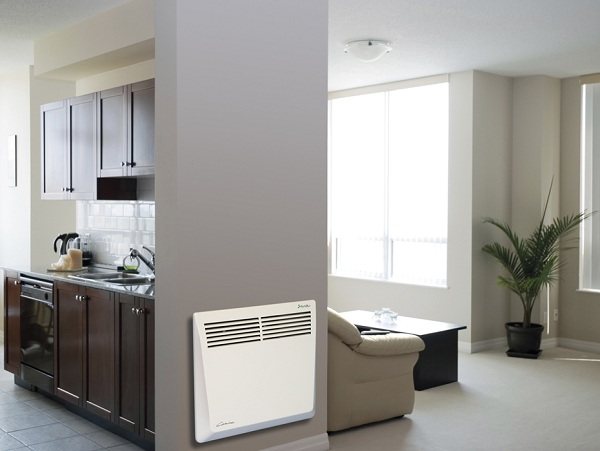

All this leaves an imprint on the choice of models with certain capabilities of the thermostat (it is desirable that it be able to regulate the temperature exactly to a degree).
Features and functions
Depending on the complexity, the heater can have a different set of features and functions. The simplest heaters (for example, many oil heaters) are heated to a certain temperature, after which they are turned off for a while. More advanced devices are able to control the room temperature and turn on and off depending on the surrounding conditions.
Heaters with an electronic control system can be equipped with a delayed start and end time, turn on and off according to a schedule and often have a set of programs for different scenarios of use.
Heaters with remote control via Bluetooth or Wi-Fi allow the user to control their operation remotely. Thanks to this solution, the heater can be turned on or off remotely. For example, it will be useful to turn on the heater before going to the dacha in order to arrive at an already warmed-up house.
Features of electric boilers
An electric boiler is a heating device that is capable of heating a large area, due to the provision of heat supply from a central heating device to the actual heat sources. That is, a heating device is located inside the boiler itself. It heats the water, and the water passes through the laid pipelines to the radiators (batteries), which are the sources of heating.
The peculiarities of electric boilers are that they:
- Do not dry the air. Does not burn oxygen, and does not create the sensation of being burned in air.
- You can pick up double-circuit models that can not only heat the room, but also provide hot water supply.
- Unlike single heaters, an electric boiler can effectively heat a fairly large area. After all, it is the center, the distributor of heat supply.
The price will also depend on the complexity of the installation itself. It can be noted that low-power simple installations are quite cheap.
Depending on the needs and the room where it will be used, you can choose a simple or more advanced version, in particular, boilers are distinguished:
Equipped with heating element and trigger for commissioning. In addition to standard installations, they are equipped with temperature control sensors. Advanced options include a remote control system.
Noise level
For most heaters, the maximum noise level is indicated in the documentation. This parameter should be looked at if the heater is installed in the bedroom, in the nursery or in the study - in general, where silence is required. The quietest heaters are infrared. They are followed by oil heaters, convector-type heaters, and then - fan heaters and heat guns.
It is worth considering that sometimes a temperature relay or a speaker can emit noise, notifying the user about a change in the operating mode (or triggered when buttons are pressed). Since these sounds can be very annoying, it is best to make sure in advance that there are no such effects. By the way, it does not hurt to check the brightness of the display, so that it suddenly turns out that the heater, which is supposed to be installed in the bedroom, shines too brightly.
Protection
Almost all heaters have a protective system that turns them off in case of overheating. A built-in fuse or overheating sensor located at the air outlet will prevent fire and unnecessary stress on the power grid.
Evgeny Filimonov
Ask a Question
Many heaters also have a system that will shut off the appliance if it falls. Subject to safety precautions (the heater is correctly installed and not covered with rags and foreign objects), such systems guarantee that the device will not cause a fire.
However, it is still possible to burn yourself on many heaters. Therefore, if there are children and elderly people in the house, it is better to think about buying the safest heater that will be difficult to hook or drop (such, for example, include wall heaters).
If the heater is supposed to be installed in the bathroom, you should pay attention to the models with a waterproof case. This will allow you not to worry about water entering the device case and a possible short circuit. Using a heater in the bathroom will not only achieve a comfortable temperature, but also prevent the appearance of fungus on the walls.
Which is better to choose - a fan heater or a convector heater?
It is very easy to get lost in today's widely represented heating market. Many consumers get lost with so many models. However, in the class of electrical devices, the leading positions are occupied by convector heaters and fan heaters. They are the most affordable, suitable as a supplement to batteries or for temporary use, for example, in the country or in the garage. However, they also have a number of significant differences, which allows you to choose one or another model of a fan heater or convector.


What is a fan heater?
An electric fan heater is the simplest and most inexpensive heater option available. They are desktop and floor-standing, of completely different sizes and configurations, with a capacity of 1-3 kW. The essence of their work is as follows: the air blown by the fan is warmed up by passing through the heating element. Thus, the device can heat up a sufficient area in a short time. And with a small room such as a garage, the device will cope even faster.
The difference in the type of design determines the presence of several types of fan heaters:
- with an open heating element;
- with tubular electric heater;
- electric heater in the form of ceramic tiles.
Options with ceramic elements have proven themselves well, thanks to their environmental friendliness and versatility of their use.
The advantages of operating fan heaters include:
1.Compact size, able to fit into any interior;
2. device mobility;
3. a variety of modes and additional built-in functions;
4. even distribution of warm air in the room.
When choosing such a device, you should pay attention to the presence of a sponge filter for coarse air purification, as well as an autonomous shutdown system in case of possible overheating of the equipment.
Features of convection devices
Convection heaters, as the name implies, operate on the principle of natural air convection. Circulating in the room, cold air flows, passing through the housing with a heat exchanger, are warmed up at the required temperature and at the outlet are evenly distributed in the space. The devices have a compact ergonomic design, a flat parallelepiped body. There are models only 3-4 cm thick. They are manufactured as floor-standing, wall-mounted, universal and even built-in equipment. The rated power is 0.25-2.5 kW. There are also modifications with a built-in infrared heater.
The difference between these devices from analogs is in the low heating speed. However, this does not cover the many advantages of using convectors:
1. suitable for use in humid rooms, provided there is an acceptable level of moisture and electrical protection;
2. long working time;
3. the presence of built-in automation, for precise temperature adjustment to the needs of the consumer;
4. noiseless operation;
5. the possibility of combining several devices into a single network for heating a house or summer cottage.
In addition to the electric ones, there are also gas modifications. These heaters are more economical to operate, however, they require a connection to the gas pipeline.


Comparison of heaters
Which one is better to buy - a convection heater or fan heater depends, first of all, on the direct purpose of the purchased device - for permanent or short-term use. Important factors are the area of the heated room, the presence of supply and exhaust ventilation and some other conditions, the main of which is the power of the device. This parameter is easy to calculate using the following standard: 70-100 W per 1 m2 of area, subject to high-quality thermal insulation of the walls.
It is better to take a fan heater for a garage or summer cottage in places of not frequent use, since these devices are not always suitable for use in residential premises. They are quite noisy in operation, emit an unpleasant odor when burning dust, burn oxygen, quickly overheat, hence the difference in application - it is better to choose only for short-term heating.
If living in the country is of a long-term nature and you need heat in the house regularly, a convector is well suited for this purpose. To choose the correct location for the heater, it is necessary to identify the places with the greatest heat loss, for example, under a window. In addition, due to the lower power values, it consumes energy more economically. The difference is that the device is practically silent and does not change the air composition in the room. It is worth paying special attention to the temperature during operation. For a children's room, it is better to purchase an option with a maximum heating of 55 ° C.
Considering all the pros and cons of the heaters presented, the method of combined use has proven itself well. To do this, it is better to use two devices in series: first, the fan heater quickly heats the air in the space, then the convection device maintains the temperature at the same level throughout the entire operating time.
Cost of equipment
It is possible to buy the most economical and affordable heater option that meets the needs of a particular consumer at the prices indicated in the following table.
| Heater name | Dimensions, mm | Heated room area, m2 | power, kWt | Price, rubles |
| Fan heater Ballu BFH / S-05 | 240x210x128 | 15 | 1,5 | 900 |
| Ceramic fan heater Polaris PCDH 1316 | 228x228x248 | 16 | 1,6 | 1300 |
| Fan Heater Humidifier Electrolux EFH / CH-8115 | 260x140x205 | 20 | 1,5 | 3600 |
| Convector Ballu BEC / EM-1000 | 460x400x82 | 15 | 1 | 2000 |
| Convector Timberk TEC.PF1 M 2000 IN | 410х810х100 | 20 | 2 | 4100 |
| Electric convector Noirot CNX-2 1500 W 7264-5 | 580x440x80 | 20 | 1,5 | 7000 |
| Convector Electrolux ECH / AG2-500 EF | 8 | 0,5 | 5800 |
Mounting type
Different heaters allow for different installation methods. Many of them are simply placed on the floor (oil heaters) and have special wheels for moving. Others can be installed on any flat surface, such as a table or windowsill (these include many fan heaters). Such heaters do not require special installation efforts. As a maximum, the user will have to assemble the legs with wheels on their own.
Also, many heaters have several mounting options for the user's choice: wall, floor, ceiling or for a suspended ceiling. At the same time, the same model can allow several installation options at once (for example, wall or ceiling). In this case, the installation will require a drill or hammer drill and other related tools, with which the mounting of the fasteners is carried out.
Based on materials from the site: vash.market, ixbt.com
Which is better: a convector or a fan heater?
Heating equipment today offers a wide range of choices. Electric heaters are indispensable when you need periodic heating of the air (for example, at a summer cottage, where the owners come on weekends or in winter, when there is not enough heat from the batteries).
Both fan heaters and convectors are actively used today for different premises. The question "which is better: a fan heater or a convector" is easy to answer after comparing their characteristics.
A fan heater is the simplest and cheapest option. The device, as the name implies, supplies heated air with a fan. The device quickly provides the required temperature in a small area.
The main differences are:
- Compact dimensions;
- Mobility;
- Low price;
- Various installation options (wall, floor, table);
- The ability to maintain a given temperature;
- Cannot be installed in rooms with high humidity.
The fan cannot be the main source of heat, only an additional one. In addition, dust can settle on the heating element, which will give a specific odor.
In the convector, heating occurs due to air circulation. It is often used in places where heat loss is greatest (for example, next to a window or on a loggia). Convectors can be electric or gas. The heating rate is lower than that of fan heaters, therefore, in an unheated room, the desired temperature can be set within a few hours.
Main advantages:
- Quiet (unlike fan heaters);
- Fire safety;
- High environmental friendliness;
- More even heating;
- Possibility of combining several convectors into a system with a single control (for full heating of the house);
- Can be floor-standing or wall-mounted;
- Can be installed in rooms with high humidity;
- Can be left unattended for a long time.
From a comparison of the characteristics, it is clear that a fan heater is more suitable for quick and short-term heating of a room; for a long and more efficient operation, it is better to purchase a convector.
Whatever you choose, be guided by the main parameter of any heater - power. On average, heating a room with normal thermal insulation requires 70-100 W per 1 m² of area.

